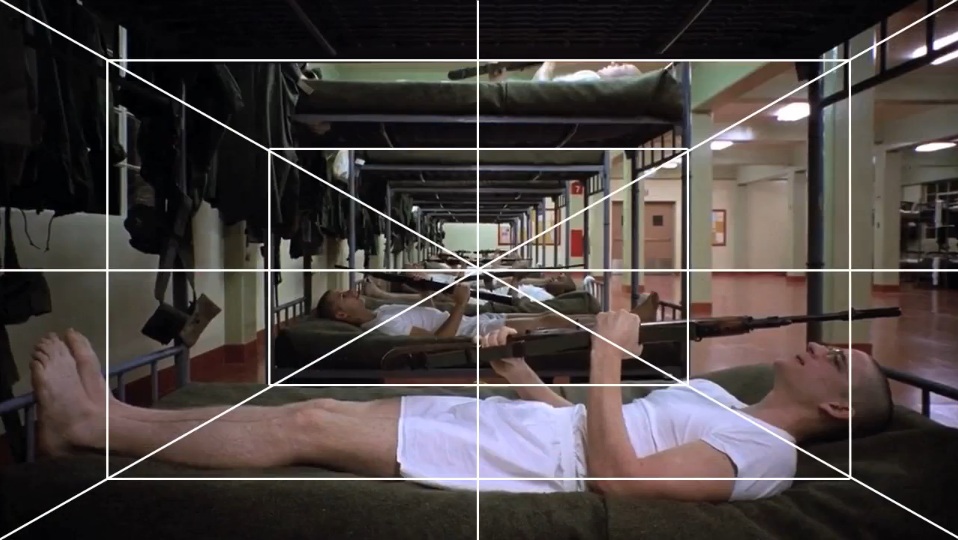Long tracking shots
Pretty much all of Kubrick's films has, at some point, had a very long tracking shot. A lot of the time this is facing the characters whilst moving backwards. This technique can have the effect of slowly establishing the mise-en-scene and the situation, which creates tension and can be very dramatic if used well, like the Trench scene in 'Paths of Glory'. This can be found in other Kubrick films such as 'The Shining', as the camera follows Danny when riding his Tricycle - which gave an disorienting and uneasy feeling as the boy rode through seemingly endless empty corridors or in circles.
The Kubrick stare
 Kubrick was a master at creating delusional/evil characters, and one of the key ways that he did this was with 'The Kubrick stare'. TKS was a facial expression whereby the actor/actress tilts their head downwards or the camera shot is taken from slightly above, and the eyes remain heavily fixated on a point just below their eyebrows. It was perfect for developing villains or dangerous characters or even just obsessive characters, because it looked detached menacing - and sociopathic. Examples of this may include 'Pvt. Leonard' in Full Metal Jacket, as he is just about to commit suicide and potentially harm others, putting the audience under great stress. This has been paid homage to in many genres, such as Star Wars Ep 3,
Kubrick was a master at creating delusional/evil characters, and one of the key ways that he did this was with 'The Kubrick stare'. TKS was a facial expression whereby the actor/actress tilts their head downwards or the camera shot is taken from slightly above, and the eyes remain heavily fixated on a point just below their eyebrows. It was perfect for developing villains or dangerous characters or even just obsessive characters, because it looked detached menacing - and sociopathic. Examples of this may include 'Pvt. Leonard' in Full Metal Jacket, as he is just about to commit suicide and potentially harm others, putting the audience under great stress. This has been paid homage to in many genres, such as Star Wars Ep 3, 
One-point perspective
You could say Kubrick had a bit of an obsession with the one-point-perspective shot. As Lauren Davis states, "There are some directors whose movies are instantly recognizable, and Stanley Kubrick is easily among them.". The one-point perspective shot is one of Kubrick's most recognizable traits, as it is used regularly in basically all of his films. He often used it for dramatic effect, to focus the audience's attention onto one spot, or to create the feeling of being trapped in a scene, rather than just watching it - through the use of perfect parallels and perpendicular lines which sometimes feel like being caged in.
These are just some of Kubrick's most famous techniques, and the fact that I am even discussing it shows just how influential he has been.



No comments:
Post a Comment